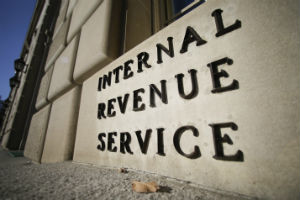The number of tax-exempt entities jumped almost 13 percent to 1,723,315 during 2014, an increase of 124,302 organizations after marginal movement during the prior three years. The number of applications more than doubled — to 117,538 — during 2014 compared to 2013.
According to data in the 2014 IRS Data Book released today, 110,654 applications were approved for tax-exempt status during 2014, up from 44,270 during 2013. The largest number of applications and approvals was in Section 501(c)(3) organizations at 100,032 of the applications and 94,365 of the approvals.
Social welfare organizations — 501(c)(4) groups — increased to 148,585 from 91,056 during 2013. That’s a jump of 63.1 percent.
A spokesman for the Internal Revenue Service (IRS) could not immediately explain the increase. It was not immediately known if the hike was reapplications of the roughly 275,000 organizations that had exemptions revoked in 2011 due to filing issues.
The jump comes as IRS Commissioner John Koskinen complained that agency appropriations declined for a fourth consecutive year. “These reductions required us to change our approach to taxpayer service and enforcement operations; with fewer resources, we saw decreases in the number of phone calls answered and the number of audits completed,” he said via a statement accompanying the data release.
Even though the number of approvals increased, the number of guidance and other regulatory activities in the tax-exempt entities division increased year-over-year since 2012. There were 1,111 activities regarding tax-exempt organizations, which rose to 1,408 during 2013 and 1,508 during 2014. During that period, enforcement activities by the division declined from 8,809 actions in 2012 to 5,924 during 2014. The decrease was from fewer actions involving employee retirement plans, according to the IRS data.
Asked why he believes there was such a significant upward spike in the numbers of approved exemption applications, Jeffrey Tenenbaum, chair of the nonprofit organizations practice at the Venable law firm in Washington, D.C., said IRS managers targeted the sector. “It is simple. The reason for the spike is that internally, senior management, including the IRS commissioner, mandated it. There had been an incredible backlog of exemption applications in prior years, and the commissioner vowed to reduce that backlog.”
Tenenbaum said it was an internal directive, and it worked. “We also witnessed an even greater spike in approved applications as year-end neared. Remember that the easiest way to clear a backlog is to approve applications, rather than deny them and face appeals and delays,” he said. “The new, streamlined Form 1023-EZ application — available to certain smaller, basic would-be tax-exempt organizations — also likely contributed to the increase in exemption recognition approvals.”
Unveiled in July, Form 1023 EZ is a three-page version of the typical 26-page application for tax-exemption. The new form, however, raised concerns by the National Council of Nonprofits and National Association of State Charity Officials, who feared that the simplified process could invite more malfeasance. In response, the IRS reduced the gross receipts threshold to be eligible for the new form, from $200,000 to $50,000.
The exempt division typically receives more than 60,000 applications annually, which has been rising since 2010. The backlog of applications last summer had numbered some 60,000 — some pending as long as nine months — and the IRS aimed to reduce it by the end of the fiscal year in September.
